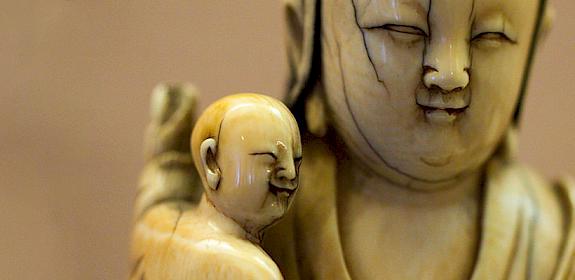
Going Dutch the import of live animals from Indonesia by the Netherlands
Coral Reefs, Raja Ampat, West Papua, Indonesia © Jürgen Freund / WWF
i
- »
- Publications »
- Reports »
- An Analysis of the Import of Live animals from Indonesia by the Netherlands
Published 21 November 2016
New study highlights significant discrepancies in live animal exports from Indonesia to the Netherlands
Netherlands, 21st November 2016—There’s a thriving trade in live wildlife between the Netherlands and Indonesia, says a new TRAFFIC study, and it’s plagued by large discrepancies in the quantities reported by the two countries.
An Analysis of the Import of Live animals from Indonesia by the Netherlands
Report author(s):
Jordi Janssen, Lisa J. Blanken
Publication date:
November 2016
key findings
The study is based on analysis of 1,146 transactions involving live animals of species listed in the Appendices of the Convention on International Trade in Endangered Species of Wild Fauna and Flora (CITES) and in the Annexes to the European Union Wildlife Trade Regulations, from 2003 to 2013.
While Indonesia reported the export of over 450,000 specimens during that period, the Netherlands recorded the import of just over 340,000, according to the new report: Going Dutch: An Analysis of the Import of Live animals from Indonesia by the Netherlands (PDF, 3.5MB).
The reported export and import figures tallied in only 41 of the 1,146 (3.6%) of cases studied. The largest difference was a gap of 12,509 specimens in the number of Polyp Stony Corals Acropora spp. exported by Indonesia over the number the Netherlands said it had imported in a 2013 transaction.
Transactions not tallying between exporters and importers is a perennial problem seen in reporting of trade worldwide: in this instance the discrepancies indicate poor compliance with CITES requirements for accurate information on the actual numbers of wildlife traded, and impedes proper understanding of wildlife trade dynamics
Chris Shepherd, TRAFFIC’s Southeast Asia Regional DirectorAside from any error or deliberate misdeclaration, known reasons for trade data discrepancies include countries reporting the number of export permits issued or quotas set, rather than the actual number of specimens in trade. Export permits may also be issued one year but utilized the next.
Live corals comprised 98% of the total trade in live animal specimens during the period, with small quantities of birds, fish, mammals, molluscs and reptiles making up the remaining two percent.
For one coral species, Hydnophora microconos, trade was reported by both Indonesia and the Netherlands despite an European Union (EU) trade restriction.
The report also red-flagged the sudden increase of trade in certain “captive-bred” species, like the Common Seahorse Hippocampus kuda, after trade in wild-sourced specimens was prohibited.
“A quick shift to sourcing specimens from captive breeding starts alarm bells ringing and the authorities should ensure that wild-taken specimens are not being laundered as captive bred,” said Shepherd.
Although trade data for species listed in CITES or the EU Annexes showed only small quantities of reptiles imported from Indonesia, the availability of “unlisted” reptile species in the Netherlands indicates a much larger trade in live reptiles exists. Currently fewer than 8% of Indonesian reptile species are listed in the CITES Appendices. A survey of the annual Snake trade expo in Houten revealed 301 unlisted Indonesian reptiles for sale by stallholders from eight European countries, a finding which suggests that species imported into the Netherlands may be destined for other European nations, facilitated by the European Union’s open internal borders.
The study recommends both countries improve documentation of the wild animal trade, particularly in coral species, and increase dialogue on species in trade, as well as co-operation on enforcement.
Indonesia is urged to inject greater transparency into the system under which harvest and trade quotas are set and improve its monitoring of captive-breeding or mariculture facilities to prevent laundering of wild animals as captive bred.
“The Netherlands should be more thorough in its evaluation of imports, the scientific evidence on which permits are issued, and increase its vigilance at commercial wildlife trade events such as fairs,” said Christiaan van der Hoeven of WWF Netherlands, the organization who funded the study.
The report also recommends that EU Member States ensure a co-ordinated response to illegal and unsustainable trade, guided by the effective implementation of the EU Action Plan against Wildlife Trafficking.
“Regular market monitoring could provide early warnings of emerging trends, potential illegal trade and prevent the use of the Netherlands as an entry point into the EU of trafficked wildlife,” said van der Hoeven.
1,146
wildlife transactions between Indonesia and the Netherlands were studied
3.6%
the percentage of cases where import and export figures tallied
98%
of the total trade in live specimens pertained to live corals
Related News and Reports
featured in: Asia & Middle East Europe Marine Invertebrates Reptiles & Amphibians Trade Monitoring Sustainability & Development




